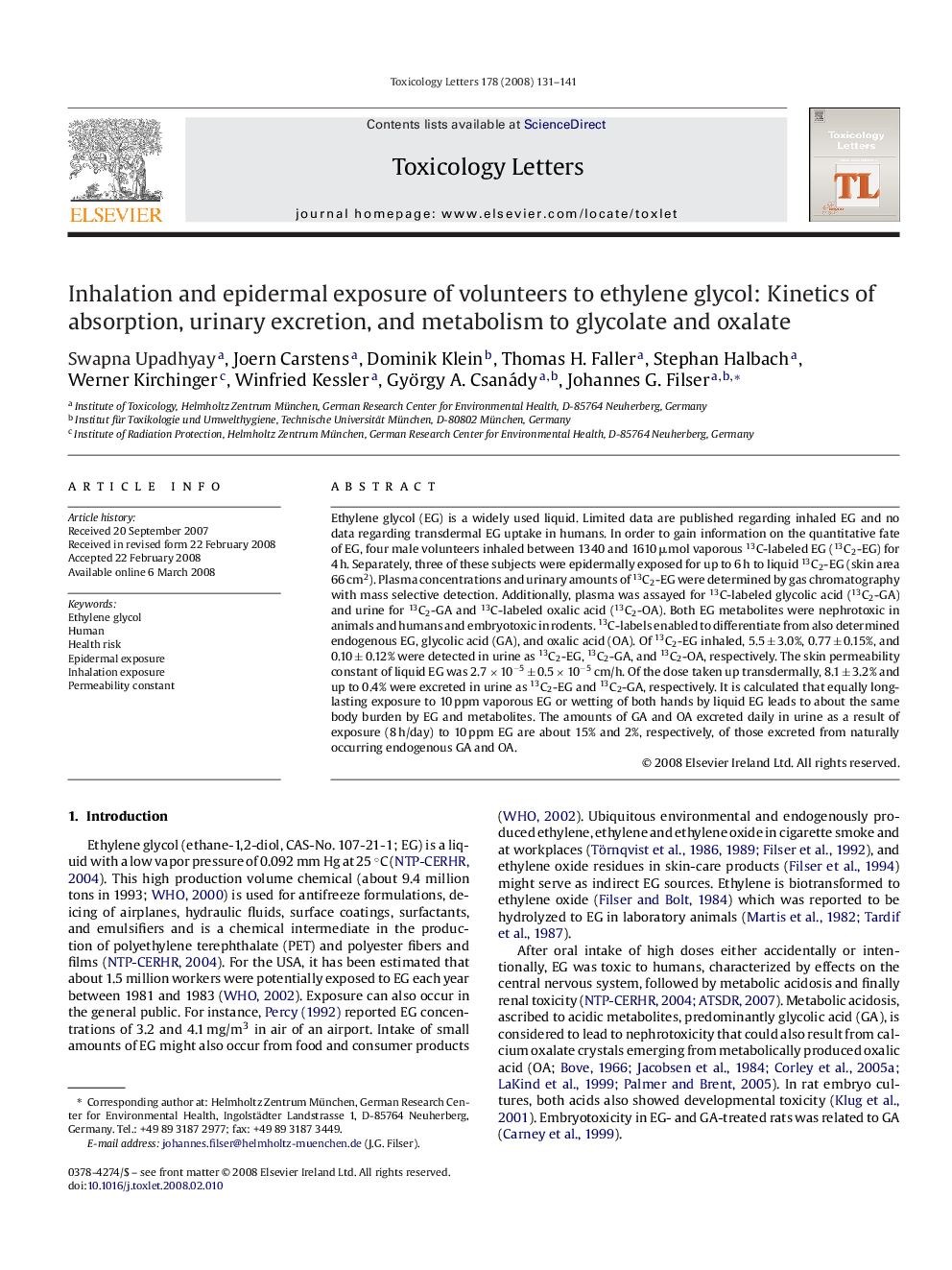| Article ID | Journal | Published Year | Pages | File Type |
|---|---|---|---|---|
| 2601853 | Toxicology Letters | 2008 | 11 Pages |
Ethylene glycol (EG) is a widely used liquid. Limited data are published regarding inhaled EG and no data regarding transdermal EG uptake in humans. In order to gain information on the quantitative fate of EG, four male volunteers inhaled between 1340 and 1610 μmol vaporous 13C-labeled EG (13C2-EG) for 4 h. Separately, three of these subjects were epidermally exposed for up to 6 h to liquid 13C2-EG (skin area 66 cm2). Plasma concentrations and urinary amounts of 13C2-EG were determined by gas chromatography with mass selective detection. Additionally, plasma was assayed for 13C-labeled glycolic acid (13C2-GA) and urine for 13C2-GA and 13C-labeled oxalic acid (13C2-OA). Both EG metabolites were nephrotoxic in animals and humans and embryotoxic in rodents. 13C-labels enabled to differentiate from also determined endogenous EG, glycolic acid (GA), and oxalic acid (OA). Of 13C2-EG inhaled, 5.5 ± 3.0%, 0.77 ± 0.15%, and 0.10 ± 0.12% were detected in urine as 13C2-EG, 13C2-GA, and 13C2-OA, respectively. The skin permeability constant of liquid EG was 2.7 × 10−5 ± 0.5 × 10−5 cm/h. Of the dose taken up transdermally, 8.1 ± 3.2% and up to 0.4% were excreted in urine as 13C2-EG and 13C2-GA, respectively. It is calculated that equally long-lasting exposure to 10 ppm vaporous EG or wetting of both hands by liquid EG leads to about the same body burden by EG and metabolites. The amounts of GA and OA excreted daily in urine as a result of exposure (8 h/day) to 10 ppm EG are about 15% and 2%, respectively, of those excreted from naturally occurring endogenous GA and OA.
